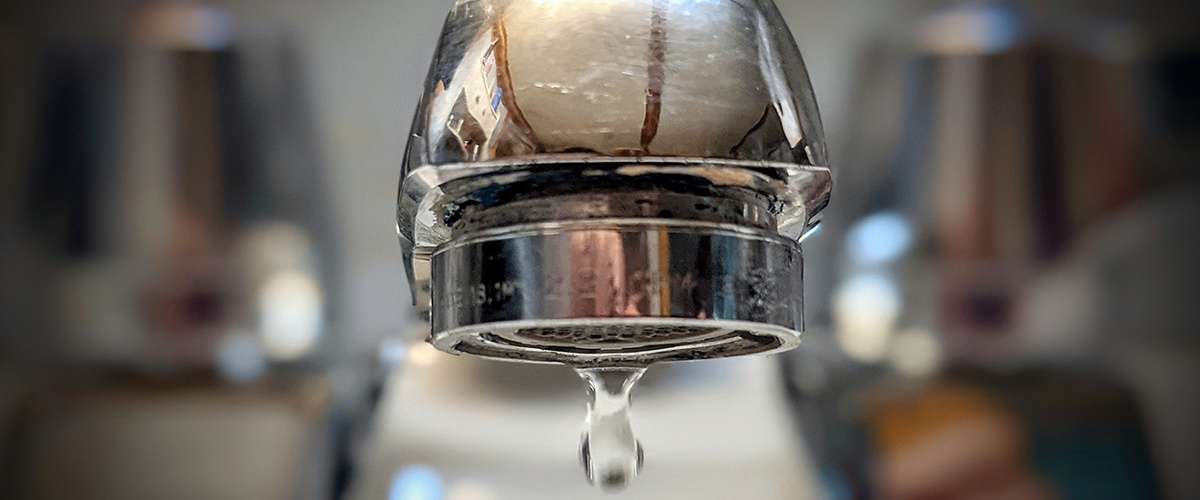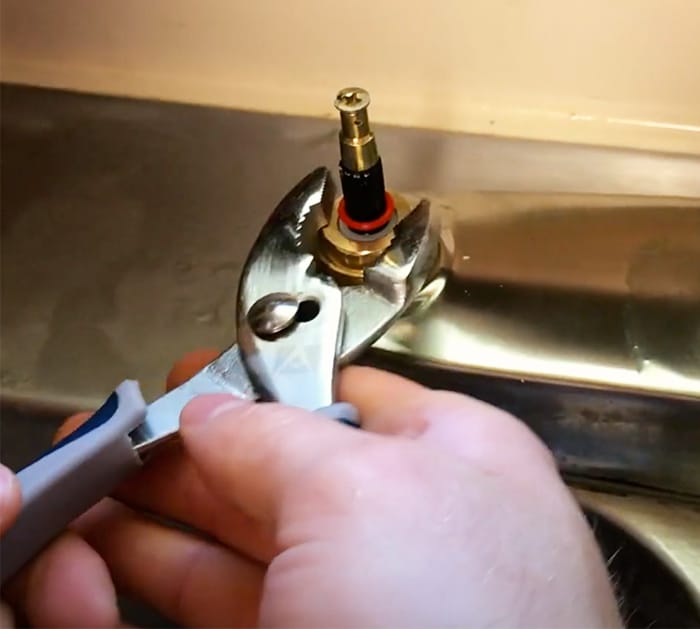How It's Important to Rectify a Malfunctioning Faucet
How It's Important to Rectify a Malfunctioning Faucet
Blog Article
We've encountered this post about How to Fix a Dripping or Leaky Faucet directly below on the web and accepted it made sense to talk about it with you over here.

Leaking taps could appear like a minor hassle, however their effect exceeds simply the annoyance of the noise. From wasting water to sustaining unnecessary monetary expenses and health and wellness risks, disregarding a trickling tap can cause various effects. In this short article, we'll delve into why it's essential to resolve this typical family problem immediately and successfully.
Wastage of Water
Ecological Effect
Leaking taps add substantially to water wastefulness. According to the Epa (EPA), a solitary tap leaking at one drip per secondly can lose greater than 3,000 gallons of water each year. This not just strains water sources however likewise influences communities and wildlife depending on them.
Step-by-Step Guide to Dealing With a Dripping Tap
Devices Called for
Prior to trying to fix a dripping faucet, gather the needed tools, including an adjustable wrench, screwdrivers, replacement components (such as washers or cartridges), and plumber's tape.
Common Tap Issues and Their Solutions
Determine the kind of faucet and the details issue triggering the drip. Usual problems consist of worn-out washing machines, corroded shutoff seats, or faulty O-rings. Describe manufacturer directions or online tutorials for step-by-step advice on repair work.
Financial Costs
Enhanced Water Costs
Beyond the environmental influence, trickling taps can inflate water costs significantly. The collected wastefulness with time translates into greater utility costs, which might have been stayed clear of with prompt repairs.
Potential Property Damage
Furthermore, extended trickling can result in harm to fixtures and surfaces bordering the faucet. Water buildup can cause discoloration, rust, and even architectural issues if left neglected, leading to extra fixing expenses.
Health Concerns
Mold and Mildew Growth
The constant visibility of dampness from a dripping faucet creates an optimal setting for mold and mold growth. These fungis not just compromise interior air quality yet likewise present health risks, especially for individuals with breathing conditions or allergic reactions.
Waterborne Diseases
Stagnant water in dripping taps can become a breeding ground for microorganisms and other virus, enhancing the danger of waterborne illness. Pollutants such as Legionella bacteria thrive in stationary water, possibly resulting in serious health problems when ingested or inhaled.
Do it yourself vs. Expert Repair
Pros and Cons of DIY Repair Service
While some might try to repair a trickling tap themselves, do it yourself repair work include their own collection of difficulties. Without appropriate knowledge and tools, do it yourself efforts can worsen the issue or cause incomplete fixings, prolonging the trouble.
Benefits of Employing a Professional Plumber
Working with an expert plumber ensures that the underlying root cause of the dripping tap is addressed successfully. Plumbing technicians possess the experience and devices to detect and repair tap issues effectively, conserving time and minimizing the danger of more damage.
Environmental Duty
Individual Contribution to Conservation
Taking responsibility for taking care of trickling taps aligns with wider initiatives toward water preservation and environmental sustainability. Every individual's actions jointly make a substantial impact on maintaining priceless sources.
Sustainable Living Practices
By focusing on timely fixings and adopting water-saving habits, individuals add to sustainable living techniques that profit both existing and future generations.
Safety nets
Normal Upkeep Tips
To avoid trickling taps, do routine maintenance such as cleaning up aerators, checking for leakages, and replacing worn-out parts promptly. Additionally, consider mounting water-saving tools or updating to much more effective fixtures.
Relevance of Prompt Services
Resolving leaking faucets as quickly as they're observed prevents more water wastefulness and prospective damages, inevitably saving both water and money in the long run.
Influence On Home Value
Assumption of Well-Maintained Residential Property
Preserving a home in good condition, consisting of resolving upkeep issues like leaking taps, boosts its perceived worth and worth amongst potential customers or lessees.
Influence on Resale Value
Features with well-maintained plumbing fixtures, including faucets, command higher resale values in the property market. Addressing dripping faucets can contribute to a positive impression throughout home inspections and negotiations.
Verdict
Resolving a trickling tap surpasses simple convenience; it's a crucial step toward conserving water, lowering economic expenses, and protecting wellness and building. Whether through DIY repair work or professional help, acting to fix trickling faucets is a tiny yet impactful way to advertise responsible stewardship of resources and add to a much healthier, more sustainable future.
How to Fix a Dripping or Leaky Faucet
A leaking faucet is one of the most common problems that homeowners encounter, but it being commonplace doesn’t make it any less annoying. The constant drip drip drip of a leaking bathtub faucet, showerhead, or sink tap can disturb your home’s serenity. Left neglected, a dripping faucet can also result in higher water bills and discoloration or mold growth in your sink or plumbing fixtures.
Fortunately, you don’t have to be a trained plumber to know how to stop a dripping faucet. With some basic tools, replacement parts, and a little patience, leaky faucet repair is a breeze. In this article, we’ll explain what causes dripping faucets and how you can fix them.
What Causes a Leaking Faucet?
Kitchen and bathroom faucets come in all manner of designs, but most involve some combination of valves, O-rings, seals, and washers. The O-ring is usually the weakest link, but any one of these pieces can wear down over time. Heat, moisture, temperature fluctuations, minerals, mold, and movement can contribute to warping and corrosion, breaking the watertight seal. This just comes with the territory of being a homeowner. Everything is always subject to wear and tear, and some component parts of your appliances and fixtures need to be replaced on occasion. At least replacement O-rings are cheap!
More rarely, dripping faucets can be a symptom of excessively high water pressure. Were this the case in your home, you would probably notice that the leak is not isolated to one faucet. Water pressure issues are harder to resolve on your own. We recommend contacting a professional plumber if you suspect your water pressure is too high.
How to Fix a Dripping Faucet
Pipe wrench or monkey wrench Allen wrench set Screwdrivers Old towel or rag Shut off the water.
Before you do anything, you need to turn off the water to keep from drenching your kitchen or bathroom. You should find a valve under the sink and against the wall. Once you’ve turned this valve, try turning the faucet on to confirm that the water source has been cut off.
If you can’t locate your local valve for the faucet you’re working on, you can always shut off the water to the house at the main valve. Of course, this will prohibit anyone from using the sinks, showers, or toilets while you’re working on the faucet that’s giving you trouble.
Plug or block the drain.
You’ll be disassembling the faucet and removing some small bits of hardware. Plug the drain with a stopper or rag to avoid the possibility of a small screw falling into your P-trap.
Take apart the faucet assembly.
There are several varieties of kitchen and bathroom faucets, each with its own manner of assembly. For detailed instructions on how to disassemble your faucet, you can refer to the fixture’s manual or contact the manufacturer. If you know whether you have a ball, disc, cartridge, or compression faucet, you can find detailed schematics online.
In general, you need to begin by removing the faucet handles. You might notice a small screw that you’ll need to remove with a screwdriver or Allen wrench. If you don’t see any visible securing hardware, it’s likely hidden under a decorative cap that can be unscrewed or popped off with flathead screwdriver.
Remove each piece methodically, consulting a schematic when necessary. Take notes or arrange the pieces in such a way to make it easier to correctly reassemble the faucet later.
Remove the cartridge.
Once you’ve removed the handles and securing hardware, you should be able to remove the valve cartridge or stem. Some cartridges will slide right out. Other faucet models will require you to loosen a nut with a pipe wrench before you can remove the valve stem.
Examine the exposed hardware.
With the cartridge or stem removed, inspect the component parts. Check the rubber O-rings for wear and tear. Also examine the seat washer for corrosion or other damage. These pieces are usually the responsible parties for a dripping faucet, but it’s worth inspecting the other component parts while you have the faucet disassembled.
Find replacement parts.
Once you’ve identified which faucet component has failed, find an identical replacement. Your local hardware store should have O-rings, seat washers, and other standard components in stock. If you have a luxury or uncommon faucet, you may have to contact the manufacturer for a replacement part.
It’s a good idea to take your old parts with you to the hardware store so you can compare them with the store’s inventory and be sure you’re purchasing the correct replacement.
Reassemble the faucet.
With your new parts in hand, reconstruct the faucet and handles. Don’t be tempted to overtighten screws or nuts. You might think this could create a better seal, but it can instead damage or bend a delicate part of the assembly and create a new problem for you.
Turn on the water and test the faucet.
The only thing left to do is test your work. Unplug the sink, turn the water back on, and try the faucet. Congratulate yourself on a job well done!
https://www.libertyhomeguard.com/how-to-fix-a-dripping-or-leaky-faucet/

We had been made aware of that editorial on Why It's Important to Fix Leaky Faucets through an acquaintance on another web blog. Those who appreciated our page if you please consider to share it. I enjoy reading our article about Leaky Faucets: Why They Happen & What to Do About Them.
Report this page